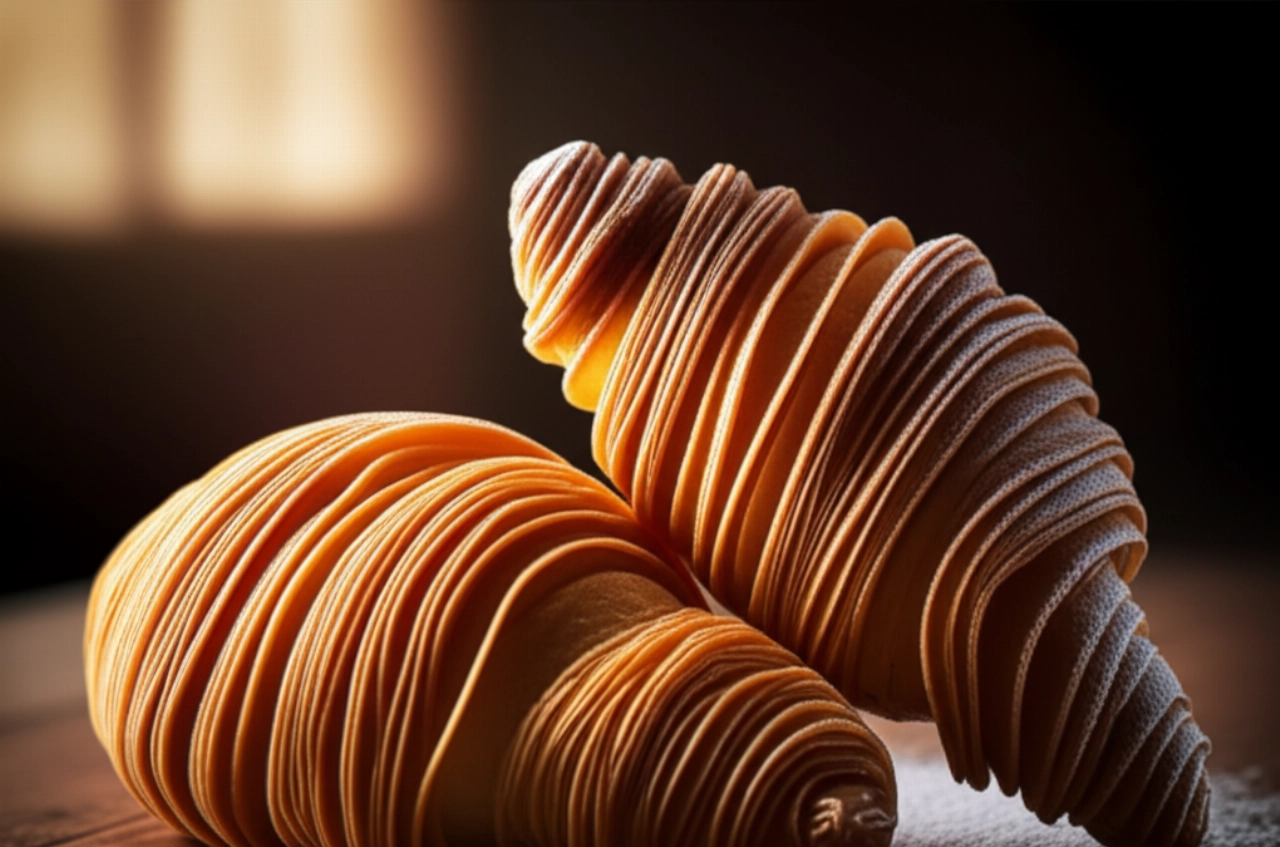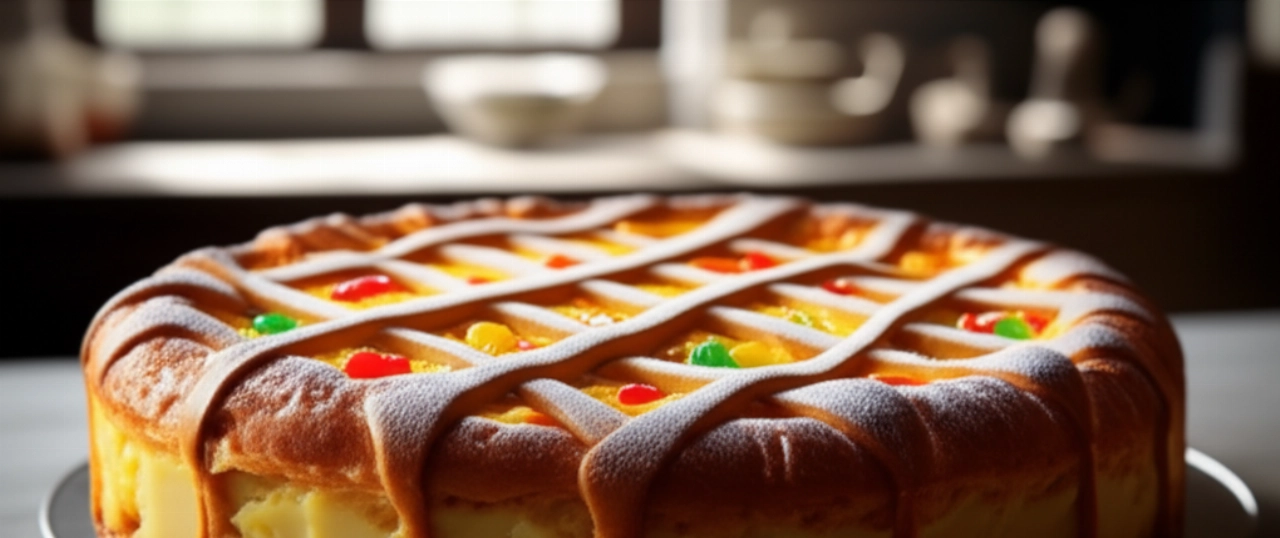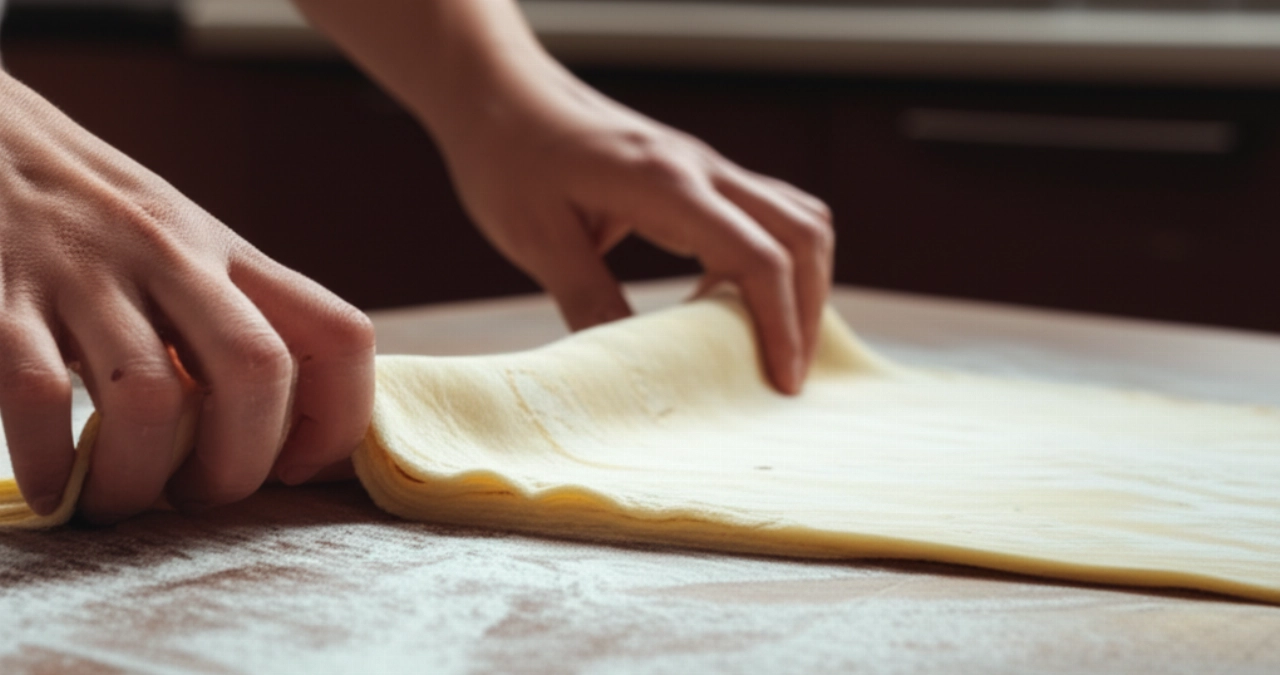Do you dream of preparing tarts and cookies with a shortcrust pastry so crumbly it melts in your mouth, yet easy to roll out and work with, without breaking or sticking? How many times have you started with enthusiasm, only to end up with a sticky, difficult-to-manage dough, or worse, a tart that shrunk during baking, ruining your masterpiece?
Finding the right shortcrust pastry recipe, one that guarantees success and makes you feel like a true pastry chef, can seem like a challenge. But don't worry, you're in the right place!
Make yourself comfortable, because here you won't just find a list of ingredients, but the ultimate guide to a perfect Shortcrust Pastry, which will bring satisfaction with every bite. I'll reveal all the secrets for an impeccable, crumbly, and versatile dough that will make you feel at home in the kitchen. Success is guaranteed!

Ingredients for a Perfect Shortcrust Pastry: The Choice That Makes the Difference
Every great work of art begins with excellent raw materials. For our shortcrust pastry, the quality and temperature of the ingredients are fundamental to achieve the crumbliness and workability you desire. Here's what you need and why:
- All-purpose flour (weak): Flour is the structure of our shortcrust pastry. Choose a weak flour (with low protein content, about 9-10g per 100g) to prevent too much gluten from developing, which would make the dough elastic and difficult to work with. All-purpose flour is perfect for this.
- High-quality butter (very cold): Butter is the soul of crumbliness. It must be of excellent quality and, above all, very cold from the fridge. This is the first secret for a pastry that doesn't stick and doesn't melt during processing.
- Powdered sugar (or fine granulated sugar): Powdered sugar dissolves more easily into the dough, contributing to a finer and more homogeneous texture. If you only have granulated sugar, make sure it's very fine.
- Eggs (cold, yolks only for more crumbliness): Eggs bind the dough. For a super crumbly pastry, one that melts in your mouth, I recommend using only the yolks. If you prefer a more robust pastry that's easier to roll out for large tarts, you can use one whole egg and one yolk. Eggs should also be cold.
- A pinch of salt: Enhances the flavor of the other ingredients and balances the sweetness. Never forget it!
- Flavorings (organic lemon zest or vanilla): The grated zest of an untreated lemon or the seeds of a vanilla bean give your pastry an enveloping aroma and an unmistakable flavor. Choose what you love most!
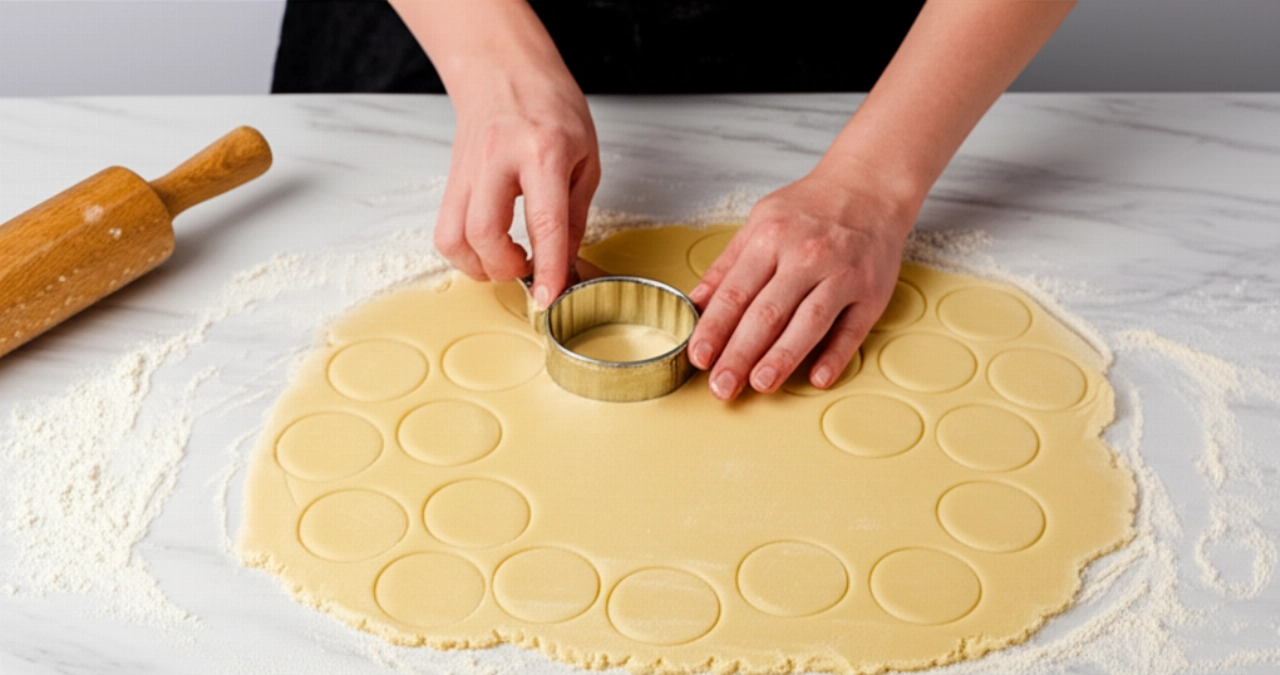
3 Common Mistakes That Ruin Shortcrust Pastry (and How to Avoid Them)
Shortcrust pastry is a simple dough, but it hides small pitfalls that can turn your dream into a nightmare. Here are the most common mistakes and how to avoid them, to guarantee spectacular success:
- Overworking the dough: This is mistake number one! The more you work the shortcrust pastry, the more gluten develops in the flour. The result? An elastic dough, difficult to roll out, which shrinks during baking and becomes hard as a rock. Shortcrust pastry should be worked as little as possible, just long enough to combine the ingredients.
- Not using cold ingredients (especially butter): If the butter is at room temperature, it will melt too quickly during processing, making the dough sticky and difficult to handle. Remember: butter and eggs always cold from the fridge!
- Skipping the rest in the fridge: Resting is fundamental! It allows the butter to solidify again, the starches in the flour to hydrate, and the gluten to relax. Without this step, the pastry will break when you roll it out and shrink during baking. A rest of at least 30 minutes is mandatory.
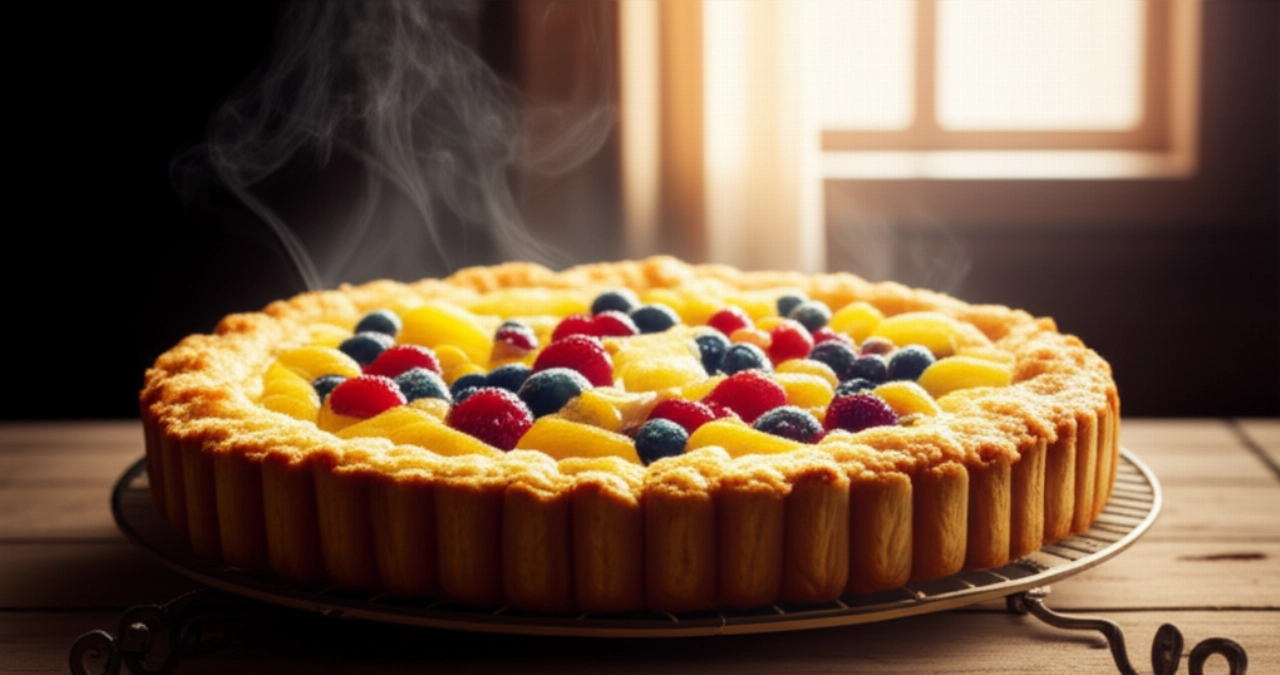
Grandma's Magic Touch: The Secret to a Foolproof Shortcrust Pastry
My grandmother, with her expert hands and a reassuring smile, always taught me that shortcrust pastry is an act of love. Her secret? Besides working the dough at lightning speed to avoid warming it, she always told me: “Remember, darling, shortcrust pastry is like a child: it needs rest to grow well and not throw tantrums!”.
And she was right! The real magic touch, besides cold ingredients and minimal handling, is the patience of resting. Never underestimate that time in the fridge: that's where the magic happens, where the dough compacts, becomes elastic enough to be rolled out without problems, and guarantees that crumbliness that will make you fall in love. Sometimes, for the crumbliest cookies, she would also add a tiny pinch of baking powder, almost imperceptible, for a guaranteed melt-in-your-mouth effect!
Let's Prepare Shortcrust Pastry Together: The Step-by-Step Guide to Success
Now that you know all the secrets, let's get to work! Follow these steps carefully and you'll see that preparing shortcrust pastry will become a piece of cake.
Ingredients:
- 250g all-purpose flour (weak)
- 125g very cold butter
- 100g powdered sugar (or fine granulated sugar)
- 1 small whole egg + 1 yolk (or 2 large yolks for maximum crumbliness)
- Grated zest of 1/2 organic lemon or 1/2 teaspoon vanilla extract
- A pinch of salt
- (Optional, for super crumbly cookies): 1/4 teaspoon baking powder
Tools:
- Large bowl or stand mixer with paddle attachment
- Plastic wrap
- Rolling pin
Instructions:
- Prepare the ingredients: Make sure butter and eggs are very cold from the fridge. Cut the butter into small cubes.
- Start "sanding": In a large bowl (or in a stand mixer with the paddle attachment), combine the sifted flour with the cold butter cubes. Work quickly with your fingertips (or with the stand mixer on low speed) until you get a sandy mixture, like coarse crumbs. This step is crucial for crumbliness!
- Add the other ingredients: Add the powdered sugar, a pinch of salt, and the chosen flavoring (lemon zest or vanilla). Mix briefly.
- Incorporate the eggs: Make a well in the center and add the whole egg and yolk (or just the yolks). If using baking powder, add it now.
- Knead quickly: Work the dough with your hands (or with the stand mixer) for the shortest possible time, just long enough for the ingredients to combine and form a compact and homogeneous ball. Do not overwork it!
- The magic rest: Form a flat disc, wrap it well in plastic wrap, and place it in the refrigerator for at least 30 minutes (preferably 1-2 hours, or even overnight). This step is fundamental for workability and final crumbliness.
- Roll out and create: After the resting time, take the shortcrust pastry out of the fridge. If it's too hard, let it sit at room temperature for 5-10 minutes. Lightly flour your work surface and rolling pin and roll out the pastry to the desired thickness (about 3-5 mm for tarts, 2-3 mm for cookies). Now it's ready to be transformed into delicious tarts or cookies!
Tips and Frequently Asked Questions about Shortcrust Pastry
Once you learn the tricks, shortcrust pastry will become your best friend in the kitchen. Here are some answers to the most common questions to clear up any doubts:
Can I prepare shortcrust pastry in advance?
Absolutely yes! In fact, it's recommended. You can prepare the dough 2-3 days in advance and store it well wrapped in plastic wrap in the refrigerator. The longer it rests, the easier it will be to work with and the more crumbly it will be.
Why does my shortcrust pastry break when I roll it out?
There are two main reasons: either it hasn't rested enough in the fridge (the butter hasn't solidified properly and the gluten hasn't relaxed), or it's too cold. If it's too cold, leave it at room temperature for 5-10 minutes before rolling it out. If it still breaks, it might have been overworked initially, making it less elastic.
How can I prevent the tart from shrinking during baking?
Shrinkage is often due to overworked dough or insufficient resting. Make sure to follow the advice on minimal handling and prolonged resting in the fridge. Additionally, after lining the mold, you can put the tart back in the fridge for another 15-20 minutes before baking. This helps stabilize the butter.
What is the difference between classic shortcrust pastry and sablée pastry?
Classic shortcrust pastry (or Milano style) involves incorporating cubed butter into the flour until a sandy mixture is obtained (sanding method), then adding the other ingredients. Sablée pastry is a variation that emphasizes crumbliness even more, often with a higher percentage of butter and powdered sugar, and starts with soft butter worked with sugar (creaming method) before adding the flour. Our recipe is a middle ground, leaning towards the sanding method for maximum crumbliness.
Can I freeze shortcrust pastry?
Certainly! Once the dough ball is formed, wrap it very well in plastic wrap and then in a freezer bag. It can be stored in the freezer for about 2-3 months. To use it, let it thaw slowly in the refrigerator for several hours or overnight before rolling it out.
Your Shortcrust Pastry Masterpiece is Ready!
There you have it! Now you no longer just have a recipe, but all the secrets to bring to the table a shortcrust pastry that tastes of home, tradition, and love. A perfect base dough for endless creations, from the simplest cookies to the most elaborate tarts.
Don't be afraid to experiment. Cooking is an act of creativity, and with this solid base, you'll see that applause won't be lacking. Every time you prepare it, you'll feel the satisfaction of having created something special with your own hands.
Have you tried our shortcrust pastry recipe? We're very curious to see your creations! Leave a comment below, tell us how it went, or share a photo on Instagram by tagging @CercaRicette.it. And if you loved the ease and crumbliness of this pastry, you can't miss our recipe for Grandma's Jam Tart or for Perfect Butter Cookies. Happy baking!


